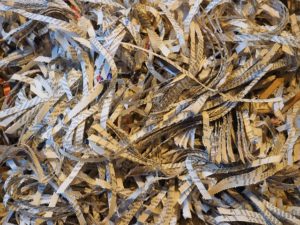All About Recycling Paper
Many of us grew up with the mantra “Reduce, Reuse, Recycle” and if you did, you’re already picturing the green arrows that went with the logo. How this early attempt at “going green” played out is that we always dumped all of our leftover paper into the recycling can. But what happens to it next? How does paper recycling work?
What Is It?
Paper recycling is a process where waste paper – either scrap from the papermaking process, discarded paper products, or used consumer paper – are reprocessed and turned into new paper or paper products. Paper is one of the most easily recycled materials since papermaking is a pulping process anyway. And there are lots of places where paper and paper products are used and recycled every day, from offices to schools, to your home. Even paper packaging is sometimes recyclable, especially some corrugated packing paper and wrapping papers not used for food. As easy as it is to recycle paper, many people still don’t do it, but they should for the health and longevity of our world. Read on for the details of how paper recycling works.
Collection and Sorting
The first step in paper recycling is to collect and sort the waste paper. Waste paper can come from a variety of sources, including trash centers, home, and business recycling cans or dumpsters, and commercial outlets that generate paper waste (such as paper mills, printers, newspapers, and the like). This waste paper is sorted, graded, measured, and sorted again. They are checked for cleanliness, paper type, and quality. Any papers that are accepted at the facility are then further sorted and graded based on quality and materials – for instance, the thin, low-quality newspapers are separated from the durable cardboard.
Shredding and Pulping
Once everything is sorted, the paper is shredded, turning it into small bits. From here, the paper has to be pulped. This is a process of mixing the paper bits with water and chemicals to break it down to its fibers and create a slurry. This slurry can then go on to become new paper eventually.
Filtering, Cleaning, De-Inking
The slurry passes through several screens and filters which remove larger contaminants, like staples, bits of glue, and even plastic film. It also is put into a centrifuge to further remove contaminants, because light foreign matter floats to the top and heavy foreign matter sinks to the bottom. Finally, the slurry is chemically de-inked and bleached (usually with hydrogen peroxide).
Finishing
Once the old paper is processed, it is mixed with new paper materials to increase its durability. It is then put through the paper-making process, usually a conveyor belt that heat dries the slurry and presses excess water from the pulp. The resulting flat, long rolls of paper are then trimmed down into usable sheets.
WB Waste Solutions, LLC
WB Waste Solutions, LLC is a waste services holding company. Our focus is delivering environmentally focused waste solutions through our family of waste collection, recycling, processing, and transportation companies. Our clients come from all sectors, Government, Business, and Residential across all industries: hospitality, construction, education, transportation, and many more.
Let us develop a comprehensive waste management solution for your business! Contact us today.